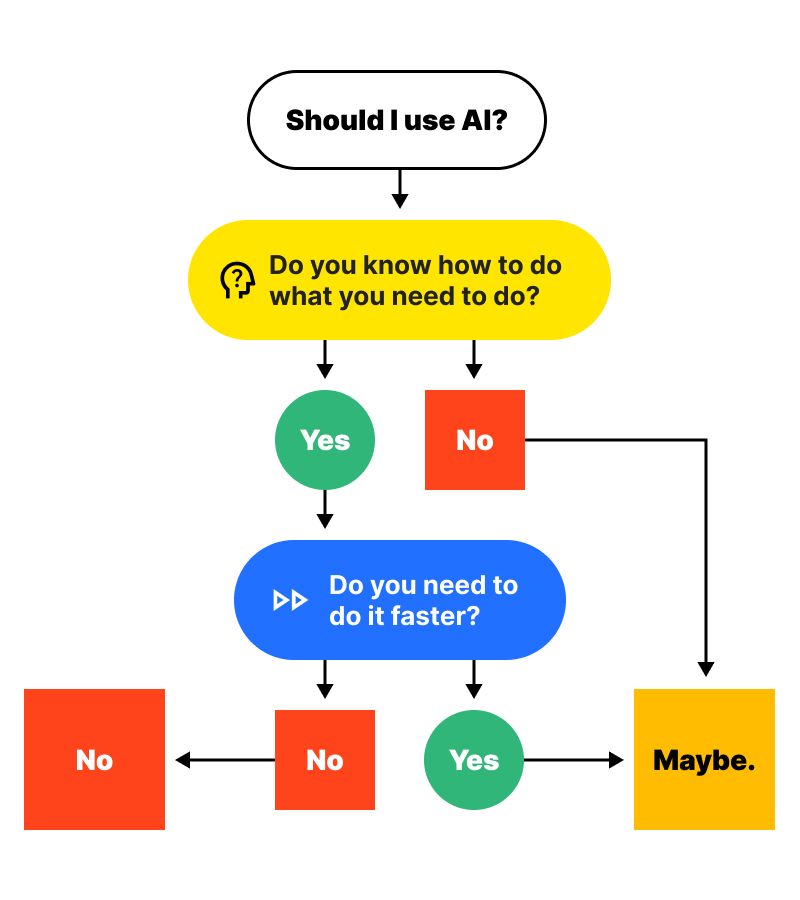How to Know When to Use AI
Maybe this will help.

In my circles, AI is either everything or it is nothing.
It is the thing to use in every case because if we don’t someone else will or it is the thing to never use because it is a sin against humanity.
Capitalists and artists have almost always disagreed. AI is like a compass sitting between them.
Of course, in between is a vast landscape of nuance — of questions, exploration, even creativity. But you’re not in Nuanceland if you’re still within earshot of dogma. If you’re commanded to use AI because it’s there, you’re not in a great position to think through how it might actually help you. If you’re committed to rejecting it, the possibility you might miss out on productivity isn’t really the point — you’re committing to not really understanding what you are rejecting.
I’ve used quite a few different “AI” tools at this point. I’m even a part of a team developing a new one. I’m ok with this because what we’re making won’t put anyone out of work. My litmus test is: is it hostile to human dignity? If no, have at it.
But I don’t like being told to use AI just because it’s there. Most of it is just not that useful to me. While I like to write and I’m not interested in teaching an AI to do it for me, this is especially true when it comes to design tasks. Why? It’s not just because most “AI” design tools pale in comparison to their text-generating counterparts. It’s because there isn’t an AI for taste yet. And when the day comes that I can train an AI to replicate my taste, the limitation will be how to create an AI with unique taste so that what it creates is a meaningful creative contribution. Incidentally, a Turing Test for taste already exists: it’s whether an AI-generated image is a good enough substitute for something you’d source versus whether it’s a good enough substitute for something you’d make.
Meanwhile, the flowchart for me is very simple. See above. I don’t need to use AI because I know how to do what I need to do and I don’t need to do it any faster.
(Notice there is no “YES” on the flowchart.)